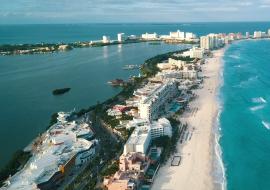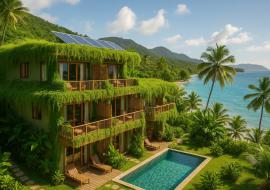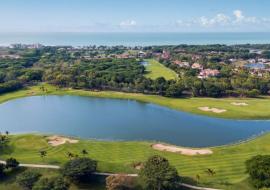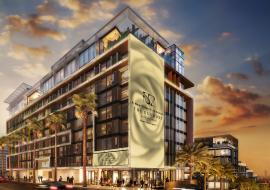Markus Semer: “This Is La Manzana”
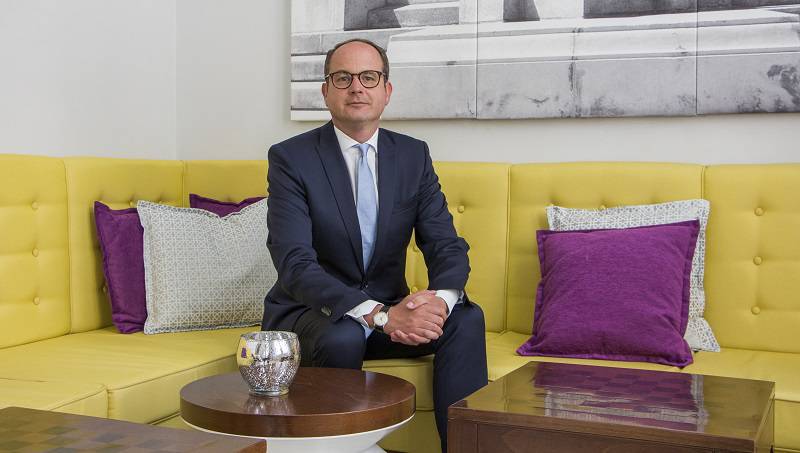
Exclusive interview with Markus Semer, Chairman of the Management Board and CEO of Kempinski Hotels
Kempinskihas just opened its first -and only- property in Havana. Like any of its 75 properties in 75 destinations across Europe, Asia and the Middle East, the Gran Manzana Kempinski is a unique hotel. It was built on a cherished landmark for the Cuban people, a location with a history of its own.
Watch exclusive pictures of the Gran Hotel Manzana Kempinski in Havana
Hours after the grand opening, Caribbean News Digital sat down with Markus Semer, CEO and chairman of the Management Board of the Germany-based hotel company. In this exclusive interview, Mr. Semer spelled out the strategic reasons behind the fact that now Cuba has become the only country of the Caribbean and the Americas to have a Kempinski property.
The brand-new hotel has 246 rooms, including 50 suites. Standard rooms cost over $440 a night and could go up to $660 during the holiday season. The suites are in the neighborhood of $2,500 per night, while the presidential suite is worth over 4,000 a night.
The cuisine is superb in every way. The hotel has so far opened three restaurants that will be serving international food with a Cuban twist.
According to Mr. Semer, Kempinski has the competitive edge now in Cuba because by the time other top-luxury brands open on the island nation, the company would have already taken a lot of the luxury business away from all the other competitors.
Cuba is all the rage now, is a fashionable country everybody wants to visit now. However, why did Kempinski pick Cuba to open an upscale, luxurious property in a country that has never ever had a property like this before?
The hotel business is moving into multinational brands, but one of the reasons for a company like ours is that you can actually pursue growth in a very long-term manner. We were the first in the 1990s to go to China as an international brand; we were the first to open in Moscow at the time. At the end of the day, we’re in business, so any businessman needs to take huge risks. We do take a huge risk. We took it in China and we took it in Russia, and we took it at a time when everybody was saying “why are you doing that?”.
When you are in the real-estate business -because this is real estate and we’re operating in real estate- you cannot follow trends, you cannot make decision on what’s special today because what’s special today, maybe next year is not going to be so. A lot of effort was put into setting up this building. We had to invest over five years into this and five years ago Cuba was not as special as it is right now. So, all this started to happen before December 17, 2014, before Obama came and before things have started to change so quickly here.
As a hotelier, you need to be able to know that; you need to make your business decisions regardless of what the situations are. Of course, the timing now is perfect. We’re opening at the peak and Cuba is everywhere. However, we made this decision, this move on Cuba before this current situation. We believe in Cuba as a long-term destination and that is why we’ve had such a successful partnership with Cuba.
This is not just a hotel; it’s a beautiful piece of landmark property and it’s very important for Kempinski because we’re trying to position our brand in the Americas. We’re very strong in Europe, Asia and the Middle East. In the Americas, we’re not yet a household name. So, what we’re doing here has a very long-term strategic view. It’s not just about opening a hotel and trying to be successful here, but seeing how successful we can be in the Americas.
Having said that, is this then the only Kempinski hotel in the Caribbean and in the Americas?
We’ll be opening our second property in the region in 2019, in Dominica. As I said earlier, this is a long-term expansion plan for the Americas, to actually expand into the Americas.
I don’t think there would be any better location available. Once you take a look at the surroundings from the top floor of this hotel, once you enjoy the view from that top floor, you understand there couldn’t be any better location.
On top of that, if you want to tell a story and build your own DNA, you can’t take over a hotel. Kempinski is not a trendy brand; we’re not one of those fashionable brands that ten years from now nobody knows anything about. We had the choice to do things from this landmark. Everybody knows this place in Cuba and I’m sure you know the story behind it. Everybody knows the story about La Manzana de Gomez. Everybody has memories of this building and many people get very emotional.
We’ve opened a hotel here and the hotel is not called Kempinski Havana, like many luxury brands do or would have done. That would have sent the message that we don’t care about the environment or the city where we operate. We cannot send the message that we don’t care about the heritage and we just put the brand name on the door and go. This is a different approach. This is La Manzana, so when you stand outside you really have to look up for the flag to know this is a Kempinski. We build on the local heritage, so that if you stay here you know that you are in Cuba.
We respect everybody’s heritage, so when we enter a new destination we need to build on the local heritage. We were part of the design process from day one. It wasn’t that we designed the hotel; they gave it to us. Our experts joined from day one and I hope that’s what makes this place so unique.
Kempinski only has one brand and we only do what we are good at, and that is top luxury, so you won’t see a second Kempinski hotel open in Havana. That means we won’t open a second hotel in Havana.
Kempinski is an exclusive brand of only 75 hotels in 75 destinations. None of them is the same, so we call it a collection of individuals. I don’t think we would be able to copy this hotel anywhere else.
It’s clearly understood that the company’s model is far from the cookie-cutter pattern other hotel chains follow. How do you manage to do that?
Our model is different and it is a very successful model. They now know we’ll give all our intention to this property. Over time, there’ll be more and more demand in Cuba for luxury brands and we welcome the competition, but we’ll only have one Kempinski in Havana. Whether we may grow our base here in Cuba, that’s a different chapter that we’ll see over time.
So, what’s the strategy Kempinski is pursuing with the opening of this one-and-only property in Havana?
The strategic move behind the opening of this hotel was to put Cuba’s luxury market on the map. Now when everybody comes to Havana they talk about this hotel, so this is a very strategic approach. We’re sending the message that a luxury hotel like this can open in any capital. It’s not Cuba as a country, but the product. We’re not going to provide this kind of service because it’s just Cuba. What we’re doing is sending out a very strategic message to the world. This was the motive.
How’s the occupancy rate faring so far on the heels of this grand opening?
The hotel is still in a soft opening process and the occupancy rate is now low until the establishment is fully ready.
Where are the first guests staying here coming from?
“Europeans are the dominating group of guests, with Americans following behind. Within the European clientele now staying at the hotel, most guests are from France, Germany, Switzerland, Austria and Spain.”
Do you have any concerns about how well this property in Cuba could do in the future?
From a business point of view, I’m not concerned. As I said earlier at the top of this conversation, we believe in Cuba as a long-term destination.







